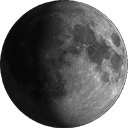A stack of 30s subs at ISO 1600 make up this view of Auriga, still riding high in the west as the sky darkens, March 2020.
Trails made from a meteor capture sequence (which didn’t). Never mind!
While trying to catch Quadrantid meteors in Jan 2019 i instead captured many meteor-free frames looking north! So i stacked a few. Later in the night a couple of tiddlers allowed to estimate the radiant, and confirm they weren’t sporadics. The image is here.











September 2015: First tryout with the new iOptron Skytracker! For my first shot using the Skytracker I aligned the unit with the pole star; a reasonably easy process if you use the iOptron Polar Scope App. With the sky darkening I fired off a series of 2 minute exposure, trying ISO 800 and 1600 speeds, and F2.8 and F4 settings. The mount was set to drive at 1X (it has a 1/2X setting too). This is probably the best single frame, taken at F2.8 and ISO 800:

Step 5 (enough of this counting already…) As an experiment I stacked 14 of these 2 minute frames using DSS, with this result:

As a first go, the new kit passes the test. When I’ve used it more I’ll post a review.




